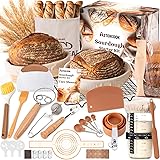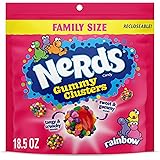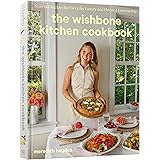Do you ever find yourself staring at yesterday’s delicious dinner, but without the slightest spark of excitement to eat it again? You’re not alone! The video above offers a brilliant solution, showing how one ingenious food lover transforms a fantastic Iskender kebab into an entirely new, eagerly anticipated meal. This isn’t just about avoiding food waste; it’s about culinary creativity and making the most of every bite.
Transforming Leftovers: A Masterclass in Repurposing Meals
Eating the same dish multiple times can lead to “leftover fatigue.” This common feeling makes even the tastiest meals seem unappetizing on day two or three. The genius lies in not just reheating but *reimagining*. Think of your leftovers not as a chore, but as a blank canvas for a new culinary adventure.
The core principle demonstrated in the video is simple yet profound: add fresh elements, introduce new textures, and elevate the flavor profile. It’s a method that turns the ordinary into the extraordinary, proving that old ingredients can certainly learn new tricks.
1. Revitalizing Takeout Leftovers: The Iskender Kebab Example
The video showcases a perfect example with leftover Iskender kebab. This beloved Turkish dish, typically featuring thinly sliced grilled lamb or chicken over pita bread with tomato sauce and yogurt, is hearty and flavorful. But how do you make it exciting again?
First, the meat is reheated until toasty, ensuring that essential warmth and a slightly crispy texture return. This step is crucial for any meat-based leftover. Instead of serving it as is, fresh naan bread provides a soft, warm base. The combination of warm, spiced meat with soft, absorbent naan is already a winner, creating a contrast that awakens the palate.
2. The Power of Freshness: Add Vibrant Ingredients
What truly elevates the dish are the additions of fresh tomatoes and pickles. These aren’t just garnishes; they provide critical elements that were likely less prominent or absent in the original leftover. The crispness and acidity of fresh vegetables cut through the richness of the meat, offering a much-needed textural and flavor contrast.
Fresh parsley adds a burst of herbaceous aroma and a bright green color, signalling freshness. Imagine a symphony where the heavy notes are balanced by light, zesty counterpoints; that’s the role fresh ingredients play in transforming a meal. They reset your taste buds and make the familiar feel new.
3. Essential Flavor Boosters: Crafting a ‘Jazzed-Up’ Garlic Mayo
Every great meal, as the video notes, often hinges on a great sauce. The ‘jazzed-up’ garlic mayo is a game-changer for the Iskender kebab. It binds the ingredients, adds a creamy texture, and introduces a new layer of garlicky, tangy flavor that wasn’t dominant in the original dish.
Creating your own sauce is a simple way to customize and personalize. A basic garlic mayo can be made by combining good quality mayonnaise with minced garlic, a squeeze of lemon juice, and a pinch of salt and pepper. Feel free to experiment: add a touch of smoked paprika, a dash of sriracha for heat, or some fresh dill for an herbal twist. This homemade touch ensures your repurposed meal tastes gourmet, not just reheated.
4. Beyond the Iskender Kebab: Generalizing Leftover Hacks
The principles applied to the Iskender kebab are universally applicable. Consider this method as a blueprint for almost any type of leftover, especially takeout. For instance:
-
Curries or Stir-Fries: Transform them into a wrap with fresh lettuce, shredded carrots, and a drizzle of lime-cilantro dressing. Or turn them into a hearty fried rice or noodle dish with a fresh egg and crisp vegetables.
-
Roast Chicken or Pulled Pork: Use the meat for tacos, quesadillas, or a loaded sandwich. Add avocado, a spicy salsa, and crunchy slaw to completely redefine the meal. Think of it as a phoenix rising from the ashes, but with more flavor.
-
Pasta Dishes: Baked pasta can be excellent on day two. For saucier pastas, consider adding fresh herbs, cherry tomatoes, or even baking it into a frittata with some cheese. The key is to add something new to break the monotony.
5. The Art of Reheating: Maximizing Texture and Flavor
Proper reheating is more than just warming food; it’s about restoring its intended texture and enhancing its flavor. The video cleverly reheats the Iskender meat in a pan, then toasts the assembled sandwich in the *same* pan. This allows the bread to soak up all the residual flavors, creating a rich, integrated taste experience.
Different foods benefit from different reheating methods:
-
Oven/Toaster Oven: Ideal for roasted meats, baked goods, or anything you want to achieve crispiness. Low and slow often prevents drying out.
-
Stovetop: Perfect for saucy dishes, stir-fries, or meats that benefit from a quick sear. A little oil can help prevent sticking and add flavor.
-
Microwave: Best for speed and convenience, but often at the cost of texture. Use it for soups, stews, or soft dishes where crispness isn’t paramount. A damp paper towel can help keep food moist.
6. Reducing Food Waste Creatively: A Sustainable Approach
Beyond the delicious outcomes, creatively transforming leftovers is a powerful step towards reducing food waste. Globally, a significant amount of edible food is thrown away each year, contributing to environmental and economic problems. By embracing strategies like those shown in the video, we become more resourceful, thrifty, and environmentally conscious in our kitchens.
Think about the economic benefits too. Each time you reinvent a meal from what you already have, you’re saving money on groceries and takeout. It’s a win-win: your wallet stays heavier, and your palate never gets bored. This approach to cooking extends your ingredients’ lifespan and brings newfound joy to your meal planning. Next time you face the conundrum of leftover food, remember this simple philosophy: don’t just reheat it, reimagine it!










